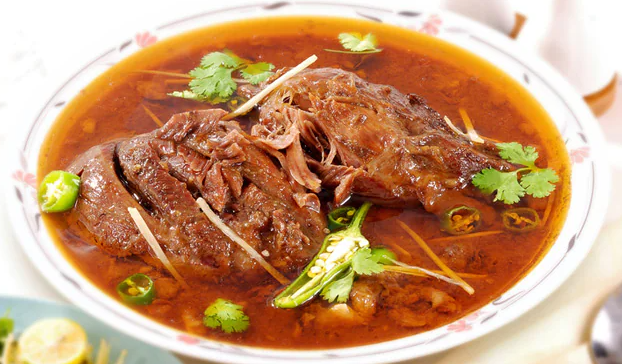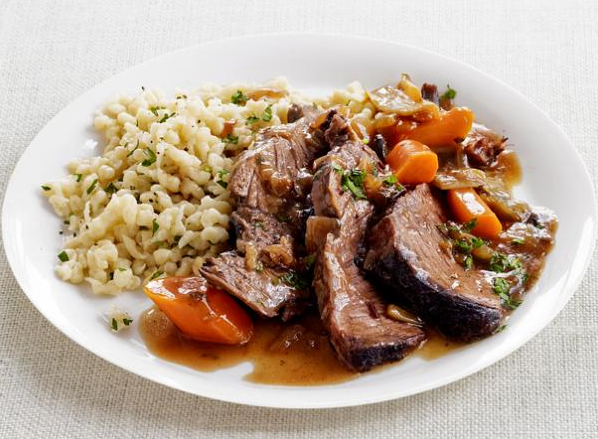Let’s dive into Cambodia National Dish. Cambodian cuisine is a vibrant tapestry of flavors, influenced by its rich history and neighboring countries. One dish that stands out as a symbol of Cambodian culinary heritage is Amok Trey. As Cambodia’s national dish, Amok Trey represents the country’s unique blend of ingredients and cooking techniques. In this article, we will delve into the history, ingredients, recipe, and cultural significance of Amok Trey, while also exploring other popular Cambodian dishes and the influence of neighboring cuisines.
History of Cambodia National Dish
Cambodian cuisine has a long and storied history, shaped by the Khmer Empire and subsequent influences from neighboring countries such as Thailand and Vietnam. The Khmer Empire’s legacy can still be seen in the use of aromatic herbs, spices, and a diverse array of ingredients in Cambodian dishes. Over time, Cambodian cuisine has evolved to create its own distinct flavors and culinary traditions.
Amok Trey: Cambodia’s National Dish
Amok Trey, also known as Fish Amok, is a delicately spiced fish curry steamed in banana leaves. It is a dish that showcases the artistry and complexity of Cambodian flavors. The combination of fresh fish, aromatic herbs, spices, and creamy coconut milk creates a harmonious blend of sweet, savory, and slightly spicy flavors.
Ingredients of Amok Trey
The key ingredients for Amok Trey include fresh fish, such as catfish or snakehead fish, coconut milk, kroeung (a fragrant spice paste), turmeric, galangal, lemongrass, and kaffir lime leaves. These ingredients come together to create a rich and aromatic curry base for the dish.
Cooking Methods for Amok Trey
Amok Trey is traditionally cooked by steaming the fish curry in banana leaves, which infuses the dish with a subtle earthy aroma. The banana leaves not only add flavor but also help retain the moisture and tenderness of the fish.
Cultural Significance of Cambodia National Dish
Amok Trey is not only a delicious dish but also holds cultural significance in Cambodian cuisine. It represents the harmony and balance of flavors that Cambodian cooking emphasizes. Amok Trey is often served on special occasions and is a favorite dish during festivals and family gatherings.
Variations of Cambodia National Dish
While fish is the most common protein used in Amok Trey, variations of the dish can be found using other meats such as chicken, shrimp, or even tofu for vegetarian options. Each variation adds a unique twist to the flavors, making it a versatile dish enjoyed by locals and tourists alike.
Traditional Cambodian Ingredients
To truly understand Cambodian cuisine, it’s important to explore the traditional ingredients that give the dishes their distinctive taste. Here are some key ingredients commonly used in Cambodian cooking:
Fish and Seafood
As Cambodia is blessed with rivers, lakes, and coastal areas, fish and seafood play a prominent role in Cambodian cuisine. Freshwater fish, such as snakehead or catfish, are commonly used in dishes like Amok Trey, while prawns, crabs, and squid are also popular choices.
Aromatics and Spices
Aromatic ingredients like lemongrass, galangal, turmeric, and kaffir lime leaves are the backbone of Cambodian cuisine. These spices add depth, fragrance, and complexity to dishes, creating a harmonious blend of flavors.
Herbs and Vegetables
Cambodian cuisine makes use of an abundance of fresh herbs and vegetables. From the fragrant leaves of holy basil and sawtooth coriander to crunchy morning glory and water spinach, these ingredients provide vibrant colors, textures, and unique tastes to Cambodian dishes.
Rice and Noodles
Rice is a staple in Cambodian cuisine and is often served alongside various dishes. Noodles, both fresh and dried, are also commonly used in soups, stir-fries, and salads.
Cambodia National Dish: Recipe
Here is a traditional recipe for Amok Trey:
Ingredients:
- 500 grams of fresh fish fillets (catfish or snakehead fish)
- 200 ml coconut milk
- 2 tablespoons of kroeung (spice paste)
- 1 teaspoon turmeric powder
- 1 tablespoon fish sauce
- 1 tablespoon palm sugar
- 1 stalk lemongrass, thinly sliced
- 2 kaffir lime leaves, thinly sliced
- Banana leaves for wrapping
- Fresh herbs for garnish (Thai basil, cilantro)
Instructions:
- In a bowl, combine the coconut milk, kroeung, turmeric powder, fish sauce, and palm sugar. Mix well to create the curry paste.
- Slice the fish fillets into bite-sized pieces and add them to the curry paste. Gently mix until the fish is coated evenly.
- Prepare the banana leaves by cutting them into squares or rectangles and lightly blanching them in boiling water to soften.
- Place a portion of the fish and curry mixture in the center of each banana leaf square. Fold the leaf to create a sealed packet, securing it with toothpicks if necessary.
- Steam the wrapped fish packets for about 15-20 minutes or until the fish is cooked through and tender.
- Garnish with fresh herbs and serve with steamed rice.
The Influence of Neighboring Cuisines
Cambodian cuisine has been influenced by its neighboring countries, particularly Thailand and Vietnam. These influences have contributed to the unique flavors and cooking techniques found in Cambodian dishes.
Thai Influence
The close proximity of Cambodia and Thailand has led to the sharing of culinary techniques and ingredients. Thai flavors such as lemongrass, galangal, and Thai basil have found their way into Cambodian dishes, adding a distinct Southeast Asian touch.
Vietnamese Influence
Cambodia’s eastern border with Vietnam has also influenced its cuisine. Vietnamese dishes like pho and spring rolls have gained popularity in Cambodia, with Cambodian versions offering their own twists.
Conclusion
Amok Trey, Cambodia’s national dish, is a testament to the country’s rich culinary heritage. Its combination of fresh fish, aromatic spices, and creamy coconut milk creates a harmonious blend of flavors that represents Cambodian cuisine. With influences from neighboring countries and a vibrant street food culture, Cambodia offers a diverse array of dishes that captivate the senses. Exploring Cambodian food is a journey into the heart and soul of this fascinating country.
FAQs
1. What is the history of Amok Trey?
Amok Trey has its roots in ancient Khmer cuisine and has been enjoyed in Cambodia for centuries. It is believed to have originated during the time of the Khmer Empire.
2. Can Amok Trey be made with other types of meat?
While fish is the traditional protein used in Amok Trey, variations of the dish can be made with other meats such as chicken, shrimp, or even tofu for vegetarian options.
3. Is Cambodian cuisine spicy?
Cambodian cuisine is known for its balance of flavors rather than extreme spiciness. While some dishes may have a hint of heat from chilies, the overall emphasis is on the harmonious combination of sweet, savory, and aromatic flavors.
4. Where can I find authentic Cambodian restaurants?
Authentic Cambodian restaurants can be found in major cities around the world, particularly in areas with significant Cambodian communities. It’s best to do some research and read reviews to find highly recommended establishments.
5. Are there vegetarian options in Cambodian cuisine?
Yes, there are vegetarian options in Cambodian cuisine. Dishes like stir-fried vegetables, fresh spring rolls, and vegetarian versions of popular Cambodian dishes are available to cater to vegetarian preferences.
References
- Cambodian Cooking: A Humanitarian Project in Collaboration with Act for Cambodia by Joannes Riviere
- The Food of Cambodia: Authentic Recipes from the Heart of Indochina by Nicole Ponseca and Miguel Trinidad
- “Cambodian Cuisine: From Ancient Roots to Modern Flavors” by Yamin S. Cheam

